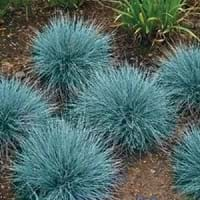Life Span
Perennial
Perennial
Origin
Eastern Asia
World/Pandemic, North America, Europe, Russia/Siberia, Asia
Types
Actinidia arguta, Actinidia giraldii, Actinidia hypoleuca
Blue fescue, Large Blue fescue
Number of Varieties
Not Available
Habitat
Dappled Shade, open Woodlands
Moist Soils, Rocky areas, Well Drained
USDA Hardiness Zone
3-8
4-8
Sunset Zone
1a, 1b, 2a, 2b, 3a, 3b, 4, 5, 6, 7, 8, 9, 14, 15, 16, 17, 18, 19, 20
1a, 1b, 2a, 2b, 3a, 3b, 4, 5, 6, 7, 8, 9, 10, 11, 12, 13, 14, 15, 16, 17, 18, 19, 20, 21, 22, 23, 24
Habit
Vining/Climbing
Clump-Forming
Flower Color
White, Ivory
Not Available
Flower Color Modifier
Bicolor
Bicolor
Fruit Color
Green, Yellow green
Not Available
Leaf Color in Spring
Green, Dark Green
Blue Green, Gray
Leaf Color in Summer
Dark Green
Light Green
Leaf Color in Fall
Dark Green
Blue Green, Gray
Leaf Color in Winter
Light Green
Blue Green, Tan, Gray
Leaf Shape
Oval
Grass like
Plant Season
Spring, Summer, Fall
Spring, Summer, Fall, Winter
Sunlight
Full Sun, Partial Sun
Full Sun, Partial Sun
Growth Rate
Medium
Medium
Type of Soil
Loam
Loam, Sand
The pH of Soil
Neutral
Acidic, Neutral
Soil Drainage
Well drained
Well drained
Bloom Time
Spring, Late Spring, Early Summer
Early Summer, Summer
Tolerances
Shade areas
Drought
Where to Plant?
Ground, Pot
Container, Ground
How to Plant?
Grafting, Stem Cutting
Seedlings
Plant Maintenance
Low
Medium
Watering Requirements
Average Water Needs, Requires regular watering
Requires regular watering
In Summer
Regular watering required
Lots of watering
In Spring
Moderate
Moderate
In Winter
Average Water
Average Water
Soil pH
Neutral
Acidic, Neutral
Soil Type
Loam
Loam, Sand
Soil Drainage Capacity
Well drained
Well drained
Sun Exposure
Full Sun, Partial Sun
Full Sun, Partial Sun
Pruning
Remove damaged leaves, Remove dead branches, Remove dead leaves
Cut or pinch the stems, Remove dead leaves, Remove dead or diseased plant parts
Fertilizers
Apply 10-10-10 amount, fertilize twice a year
Apply 10-10-10 amount
Pests and Diseases
Botrytis head rot, Japanese Beetles, Leaf Rollers, Nematodes, Phytophthora, Root rot, Sclerotinia blight, Spider mites, Thripes
Red blotch
Plant Tolerance
Shade areas
Drought
Flowers
Showy
Insignificant
Flower Petal Number
Single
Single
Foliage Texture
Medium
Fine
Foliage Sheen
Glossy
Matte
Attracts
Cats
Birds, Butterflies
Allergy
Not Available
Not Available
Aesthetic Uses
Cottage Garden
Ground Cover
Beauty Benefits
Not Available
Not Available
Environmental Uses
Shadow Tree
Air purification, Provides ground cover
Medicinal Uses
Antioxidants, Fiber, Folate, Rich in Potassium, Vitamin C
Not Available
Part of Plant Used
Fruits
Flowers, Seeds
Other Uses
Grown for shade
Used as Ornamental plant
Used As Indoor Plant
No
Insignificant
Used As Outdoor Plant
Yes
Yes
Garden Design
Edible, Feature Plant, Vine
Bedding Plant, Container, Feature Plant, Mixed Border, Rock Garden / Wall
Botanical Name
ACTINIDIA arguta
FESTUCA glauca 'Boulder Blue'
Common Name
Hardy Kiwi
Blue Fescue, Boulder Blue Fescue
In Hindi
हार्डी कीवी
Boulder Blue Fescue
In German
Hardy Kiwi
Boulder Blau -Schwingel
In French
kiwai
Boulder bleu fétuque
In Spanish
kiwi hardy
Boulder azul de la hierba festuca
In Greek
σκληραγωγημένα ακτινίδια
Boulder μπλε γρασίδι φεστούκα
In Portuguese
kiwi Hardy
Boulder Blue Grass festuca
In Polish
hardy kiwi
Boulder niebieskie trawy kostrzewy
In Latin
Hardy kiwi
Hyacintho herba, lapidem fescue
Phylum
Magnoliophyta
Magnoliophyta
Class
Magnoliopsida
Liliopsida
Family
Actinidiaceae
Poaceae
Clade
Angiosperms, Asterids, Eudicots
Angiosperms, Commelinids, Monocots
Tribe
Not Available
Poeae
Subfamily
Actinidiaceae
Pooideae
Number of Species
Not Available
Season and Care of Hardy Kiwi and Boulder Blue Fescue
Season and care of Hardy Kiwi and Boulder Blue Fescue is important to know. While considering everything about Hardy Kiwi and Boulder Blue Fescue Care, growing season is an essential factor. Hardy Kiwi season is Spring, Summer and Fall and Boulder Blue Fescue season is Spring, Summer and Fall. The type of soil for Hardy Kiwi is Loam and for Boulder Blue Fescue is Loam, Sand while the PH of soil for Hardy Kiwi is Neutral and for Boulder Blue Fescue is Acidic, Neutral.
Hardy Kiwi and Boulder Blue Fescue Physical Information
Hardy Kiwi and Boulder Blue Fescue physical information is very important for comparison. Hardy Kiwi height is 550.00 cm and width 90.00 cm whereas Boulder Blue Fescue height is 30.50 cm and width 25.40 cm. The color specification of Hardy Kiwi and Boulder Blue Fescue are as follows:
Hardy Kiwi flower color: White and Ivory
Hardy Kiwi leaf color: Green and Dark Green
Boulder Blue Fescue flower color: Not Available
- Boulder Blue Fescue leaf color: Blue Green and Gray
Care of Hardy Kiwi and Boulder Blue Fescue
Care of Hardy Kiwi and Boulder Blue Fescue include pruning, fertilizers, watering etc. Hardy Kiwi pruning is done Remove damaged leaves, Remove dead branches and Remove dead leaves and Boulder Blue Fescue pruning is done Cut or pinch the stems, Remove dead leaves and Remove dead or diseased plant parts. In summer Hardy Kiwi needs Regular watering required and in winter, it needs Average Water. Whereas, in summer Boulder Blue Fescue needs Lots of watering and in winter, it needs Average Water.





